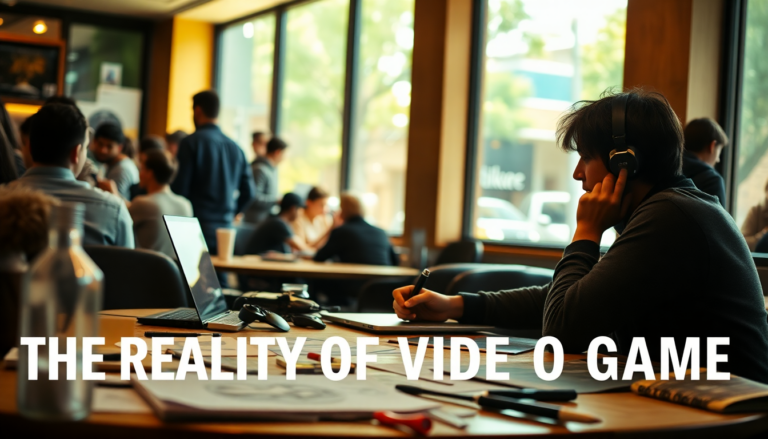Argomenti trattati
It’s fascinating how often people jump to conclusions about game development, often with little understanding of the complexities involved. Imagine sitting down with a game developer at a local café, where the conversation inevitably turns to the myriad misconceptions surrounding their craft. This isn’t just idle chatter; it’s a necessary dialogue that helps demystify an industry that many think they understand but few truly do.
The reality of game development teamwork
Dave Oshry, CEO of New Blood Interactive, recently highlighted a key truth: most players are unaware of how games are crafted. Contrary to popular belief, game development is not a solitary endeavor. It requires collaboration among a diverse group of professionals, from programmers to artists, animators, and sound designers. The successful creation of a game hinges on the synergy of these individuals working together in harmony. Oshry points out, “You can gather the best talents in one place, but that doesn’t guarantee the creation of a great game. It’s about how well they work together.”
In my experience, I remember back when I was involved in a small indie project. We had an incredibly talented team, yet our lack of communication and collaboration led to a product that—while ambitious—just didn’t come together. This underlines Oshry’s point: great games emerge not just from skill, but from great teamwork.
Another aspect that Oshry touches upon is the hidden pressures and complexities that can influence game development. Often, decisions are made not just based on creative vision but also due to external factors—be it market demands or investor expectations. This intricate web of influences can complicate the development process significantly. As a result, what might seem like a straightforward task can involve layers of negotiation and compromise that the average player is blissfully unaware of.
Yet, this is where things can get a bit tricky. It’s easy to blame developers when features don’t roll out as expected, but the reality is often far more nuanced. For instance, when a much-anticipated feature isn’t included at launch, it’s not necessarily a matter of laziness or incompetence; it could be due to the aforementioned pressures or simply the time required to implement it correctly.
The double-edged sword of accessible tools
Accessibility in game development tools has dramatically increased in recent years, which is a double-edged sword. As Szymanski points out, while it’s easier than ever for aspiring developers to dip their toes into game creation, it also leads to a surge of misconceptions about how straightforward tasks should be. When someone with minimal experience claims that a feature should take just a few days to implement, it can be incredibly frustrating for seasoned developers.
It reminds me of a chat I had with a friend who recently tried his hand at game development. He was convinced that creating a simple mechanic would be a walk in the park, only to find himself deeply entrenched in complex coding. This scenario plays out time and again in forums, where well-meaning but misinformed players suggest fixes that, in reality, require extensive development time. It’s enough to make any developer roll their eyes.
Addressing the myths head-on
The gaming community is rife with myths that can lead to undue criticism of developers. The belief that all features can be implemented quickly or that all studios operate under similar conditions is a misconception that needs addressing. The reality is that every studio has its unique dynamics, challenges, and timelines. Often, studios with a pedigree from larger companies are scrutinized more heavily, leading to unrealistic expectations about their output.
Take for example studios that boast about their previous achievements. While it’s natural to highlight past successes to attract talent and funding, the assumption that a team will automatically replicate that success together is flawed. The chemistry and cohesion of a team are critical and can’t be taken for granted.
Conclusion: Leaving behind assumptions
As we continue to dive deeper into the world of gaming, it’s essential to shed these misconceptions. The next time you find yourself frustrated with a game or a developer, remember that there’s often much more happening behind the scenes than meets the eye. The industry is filled with passionate individuals dedicated to their craft, often working under challenging circumstances. Perhaps the next time you play a game, you’ll appreciate the unseen effort that went into its creation. After all, as they say, “You can’t judge a book by its cover” – or a game by its launch.

